Five Extraordinary Colleges You Know Very Little About…until now 0
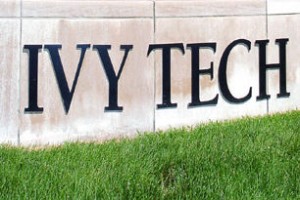 According to the Department of Education, there are 2364 four-year colleges in the United States. Of those, 612 are public colleges. I dare say that about 300 of them would be at least somewhat familiar to about 80% of the public.
According to the Department of Education, there are 2364 four-year colleges in the United States. Of those, 612 are public colleges. I dare say that about 300 of them would be at least somewhat familiar to about 80% of the public.
What about the 2064 unknown colleges. Which of these colleges are worth exploring? When all is said and done, does it matter that much where one goes to college? If you are not looking for a specific program only offered at a particular college, it matters less than you think. What really matters is what you do when you get there.
Some students realize that it might not be a bad idea to look at two-year colleges as well. And some of them are looking at two-year colleges outside of the region in which they live. If there is a community college that is beyond commuting distance but has a specific program you are interested in taking, particularly those with a Phi Theta Kappa Honor Society chapter, you can rent an apartment near the campus. Many colleges such as Greenfield Community College in Massachusetts or the Ivy Tech Community College system in Indiana, can recommend student housing for such students.

Occasionally I like to step back and look at the colleges whose offerings make them stand out. It does not mean they are right for you. But one or more of them could be.
Let me take you on a brief tour of just five of them now.
They are not in any particular order, but # 1 on the list is a two-year college. In fact, this two-year college is tougher to gain admission than is Harvard. Though they are shocked at first, I get a kick out of telling some extremely bright students that they will not have a prayer in being accepted to this college. Here is why.
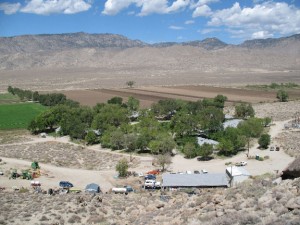 1.) Deep Springs College since 1917 accepted only thirteen men into its two-year program each year. That is, until the Class of 2017 applies at which time it may accept female applications. (As of 1/15/17 the decision to accept women has not been made.) It is a rigorous admissions process including several interviews and multiple essays. (The average applicant’s SAT score is 1450.) It is a working cattle and alfalfa ranch but one with a rigorous liberal arts curriculum in the High Desert region of Southern California.
1.) Deep Springs College since 1917 accepted only thirteen men into its two-year program each year. That is, until the Class of 2017 applies at which time it may accept female applications. (As of 1/15/17 the decision to accept women has not been made.) It is a rigorous admissions process including several interviews and multiple essays. (The average applicant’s SAT score is 1450.) It is a working cattle and alfalfa ranch but one with a rigorous liberal arts curriculum in the High Desert region of Southern California.
I have worked with two students in years past who earned their Associate of Arts degree there when it was all-male…until 2018! Yes, young women can now apply to a college where only an AA degree is earned and many applicants, who were also accepted to Ivies, Stanford, and the like, choose to spend two full years in the high desert herding cattle, driving farm tractors, washing dishes and learning how to think critically by means of a very deep academic curriculum from top-flight professors who love to teach there. I have two videos on this page. Be sure to watch this one and the one below.
It was founded by an early California pioneer, LL Nunn in 1917 on his idea that the three pillars… academics, labor, and self-governance help young men prepare themselves for lives of service to humanity. The school’s 26 students, along with its staff and faculty, form a close community. The college operates on the belief that manual labor and political deliberation are integral parts of a comprehensive liberal arts education.
Plus, it is FREE. Each student attends for two years and receives a full scholarship valued at over $50,000 per year. Afterward, most earn their undergraduate and graduate degrees at the world’s most prestigious four-year institutions. It is practically a slam dunk admission transition. Getting a first-class education, and saving up to $110,000 in the process is not a bad way to spend and invest in two years.
Now you know why I can no longer say to some students that they will not have a prayer to being admitted. One intellectually curious young woman I shared this fact with in 1998, was undeterred. Because her goal is to become a college English professor, she saw that as way to be part of the Deep Springs community. (Professors from schools like Stanford, Harvard, and Yale go there to teach periodically for a semester or two.)
Therefore, if you are a male, or female, and intrigued by the concept, why not take 30-minute look at a college like no other.
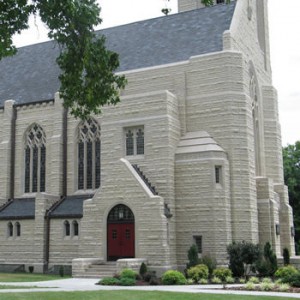 2.) Another college that is respected for its philosophy of combining work with learning is The College of the Ozarks. COFO is committed to a five-fold mission of encouraging academic, Christian, cultural, vocational, and patriotic growth in its students.
2.) Another college that is respected for its philosophy of combining work with learning is The College of the Ozarks. COFO is committed to a five-fold mission of encouraging academic, Christian, cultural, vocational, and patriotic growth in its students.
All full-time students work rather than pay for their tuition. The college discourages debt and, like Hillsdale College, does not participate in any government loan programs. On the other hand COFO does participate in federal grant programs so the FAFSA will need to be filed, to determine eligibility. (Hillsdale does not use the FAFSA.)
Academic offerings are surprisingly broad as you can see here. This combined with the strong work program makes it a valuable experience and excellent preparation for a fulfilling life.
By the way, College of the Ozarks has been named a Stone-Cold Sober School by the Princeton Review for ten consecutive years. Alcohol and drugs are strictly prohibited on and off-campus. Therefore, a student who applies to the school with the nickname Hard Work U. and looks forward to spring breaks in Cancun is unlikely to be a good fit for this college.
 3.) In beautiful Southern California, high above the Pacific Ocean sits a relatively new college with a unique mission. Soka University was founded on the Buddhist principles of peace, human rights, and the sanctity of life, SUA is open to students of all nationalities and beliefs and is committed to diversity in its academic community.
3.) In beautiful Southern California, high above the Pacific Ocean sits a relatively new college with a unique mission. Soka University was founded on the Buddhist principles of peace, human rights, and the sanctity of life, SUA is open to students of all nationalities and beliefs and is committed to diversity in its academic community.
Soka founders and faculty believe that student-centered education is the best way to promote peace and human rights by fostering a global humanistic perspective on the world in which we live. The university prepares students for graduate studies and the world of work in an increasingly diverse and global society.
In an age when the world is facing the prospect of perpetual war, this is a mission that mandates going beyond words, putting beliefs into action. Soka is a very small university with a big vision. If its core mission could be replicated in some manner by other colleges, that would be ideal. In any case, I believe Soka University is heading in the right direction.
Take a 360-degree tour of this incredible campus with buildings inspired by northern Mediterranean style architecture. You will not believe what you see.
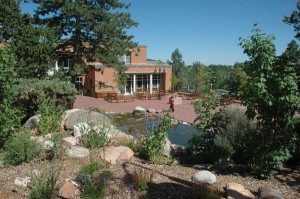 4.) There are two St Johns College campuses one in Sante Fe, New Mexico, and the other in Annapolis, Maryland. There is little difference between the two, other than the natural beauty of the Santa Fe campus and the rich historic setting of Annapolis.
4.) There are two St Johns College campuses one in Sante Fe, New Mexico, and the other in Annapolis, Maryland. There is little difference between the two, other than the natural beauty of the Santa Fe campus and the rich historic setting of Annapolis.
St Johns is a college that bases its curriculum on the great books. The all-required course of study is based on the reading, study, and discussion of the most important books of the Western tradition. There are no majors and no departments; all students follow the same program.
Students study from the classics of literature, philosophy, theology, psychology, political science, economics, history, mathematics, laboratory sciences, and music. No textbooks are used. The books are read in roughly chronological order, beginning with ancient Greece and continuing to modern times.
All classes are discussion-based. There are no class lectures; instead, the students meet together with faculty members, called tutors, to discuss the literature.
If you are interested in becoming a doctor, there is no lack of solid science learning at St Johns either. You will be well prepared for medical school, and their approach is explained here.
So, you might be thinking that’s nice, but what can I do with a degree based on the study of the ancient writings and philosophical musings of dead white males? The answer is anything you want to do!
Here is how valuable you will be to a future employer (even if you are self-employed) once you learn how to think critically, discuss ideas rationally, and write interestingly.
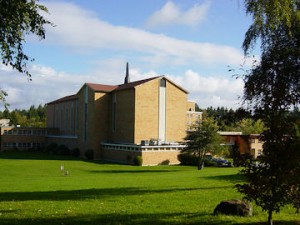 5.) I wish there were more Universities like Bastyr University. I have had a lifelong interest in nutrition and true wellness. My dad was both a Doctor of Medicine and a Doctor of Science. He was trained in the Allopathic tradition but spent his professional career focused on nutrition and disease prevention. That made sense early on to me.
5.) I wish there were more Universities like Bastyr University. I have had a lifelong interest in nutrition and true wellness. My dad was both a Doctor of Medicine and a Doctor of Science. He was trained in the Allopathic tradition but spent his professional career focused on nutrition and disease prevention. That made sense early on to me.
If you are a teenager who wishes to become a medical doctor or enter the health sciences field because you have a strong desire to help people, I encourage you to look at this university. In fact, many bright men and women have gone on to become Naturopathic or Homeopathic physicians after they earned a Doctor of Medicine degree. But that does not have to be the route one takes. Spend time in high school studying the merits of each, particularly by reading this book I highlight in my short essay titled “Do You Want to Be a Doctor?”
There are pluses and minuses with each approach. For instance, if you were hit by a truck, a hospital emergency room would be the best place to be, not having a Reiki treatment. I am a Reiki Master, but would not work in an ER. But if you want to understand the true connection between mind, body, and soul as it relates to optimal health and prevention of disease, the first step may be a 90-minute appointment with a physician who has been trained in that approach.
Regretfully, Johns Hopkins, and Harvard medical school et al, do not train physicians in that manner. In fact, the former is particularly against teaching medical students the principles of disease prevention. It is one of the premier proponents of treating the symptoms of a disease as opposed to finding solutions to prevent the disease in the first place.
Bastyr is recognized as a pioneer in natural medicine. It is the largest university for natural health arts and sciences in the U.S., combining a multidisciplinary curriculum with leading-edge research and clinical training.
Graduate programs include naturopathic medicine, acupuncture, and Oriental medicine, nutrition, and nutrition and clinical health psychology.
Look here to see what they are doing for the greater Seattle community. This is the kind of clinical training students at Bastyr take advantage of in their undergraduate and graduate years. http://www.bastyrcenter.org/
With the cost of health care rising along with metabolic diseases of all sorts, does it not make sense to focus on genuine prevention of disease as opposed to treatment of the disease? That is Bastyr’s mission. Regretfully, because the pharmaceutical industry has a stranglehold on the way medical students are taught, and the politicians in D.C. who pass laws that only favor what is known as Big Pharma, physicians who specialize in the prevention of disease can not have their services covered by “health” insurance.
In the future, I will highlight five more sets of less-known schools that have admirable missions. I hope that you see in this sampling of five unique colleges opportunities to explore that go beyond the traditional path of a typical high school student.
Let us be your guides. Call for a free get-acquainted consultation today. Or, if you are a student we are already working with, and have not had a review of your college strategy recently, email or call us @ (978) 820-1295.
